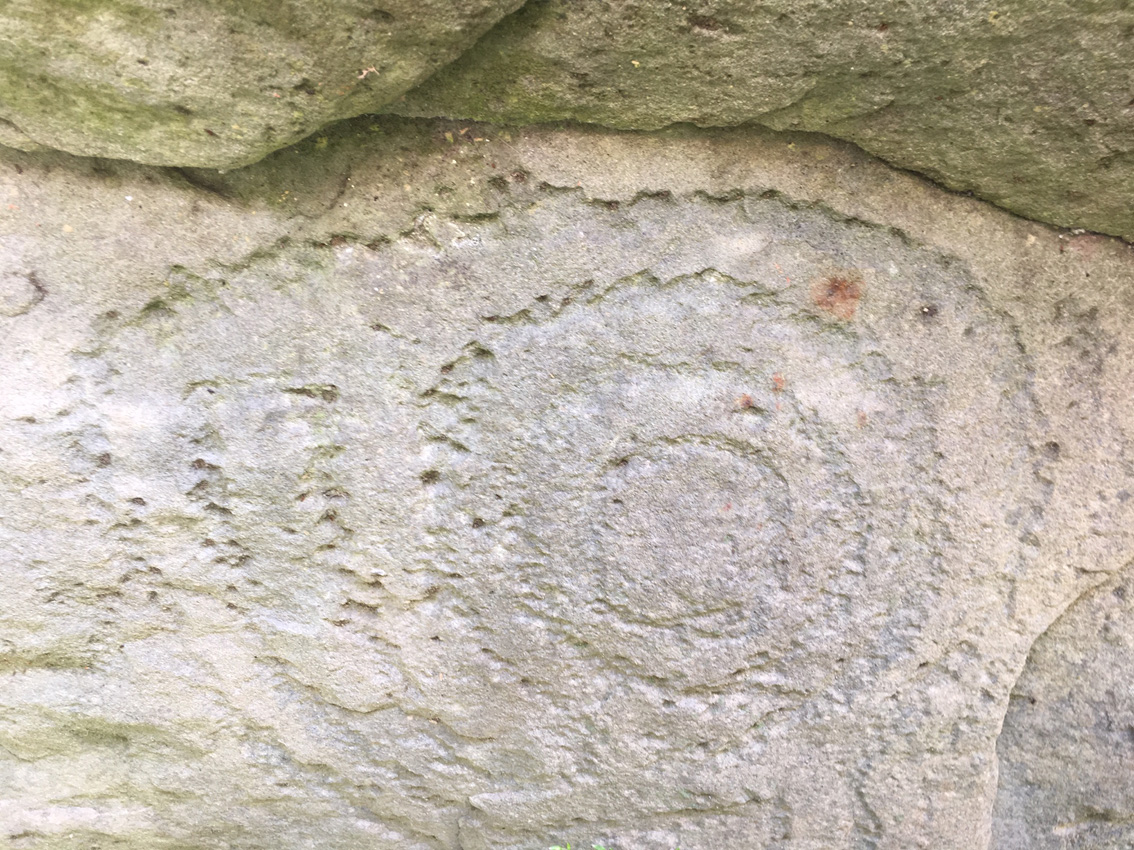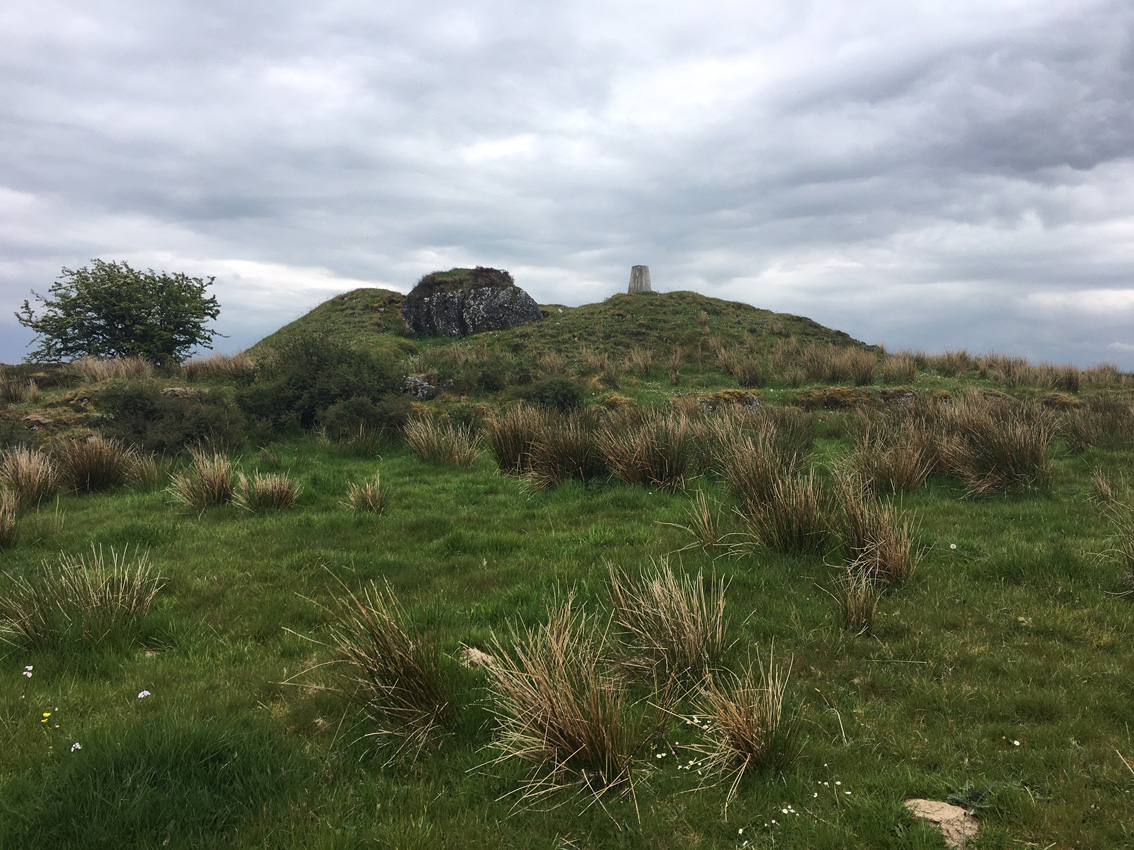
Looking west with Slievenamon over the shoulder of the stone.

Looking west with Slievenamon over the shoulder of the stone.


Holy water cures headaches because it’s magic. What do you do, immerse your head into the bowl?

The third bullaun, beside the holy well.

Two of the three bullauns in Kilkieran graveyard. The one on the left has a channel that breaks the side of the bowl.



Former standing stone, dumped in the field boundary, would have been maybe 2 metres tall with half a metre subterranean.

About 2 metres tall by 3 metres long by 15cms thick.

Another angle showing the slab-like stone. There’s another one lying flat on the ground beside it and there’s limestone pavement in the area. I’ve a suspicion that these may be the remaining stones from a portal tomb, a stream flowing just 50 metres to the west.

About half a kilometre north of the passage tomb is this slab-like standing stone.

From one of the info boards. I count 26 decorated stones in total.

Kerb on the south side with the south-eastern chamber and passage behind.

Almost like an afterthought doodle, this carving is still sharp.

The most thoroughly decorated of all the stones at Knockroe.

Pano looking roughly south-east. The excavations are finished and the remains have been allowed to settle.

Looking west over both passages and chambers. Slievenamon is behind the trees on the right.

Concentric circle carving on a northern orthostat of the western passage.

Protected from the harshest weathering, below an overhanging lip and at the bottom of one of the orthostats of the western passage, the pick-marks are clear on this concentric ‘circle’ carving.


There are said to be 27 stones in the kerb of the 9m diameter cairn.



There is a grassy track up to the tomb from the main forestry track, handily signed by some enthusiasts.

The last site of the day on a great trip to south Sligo. The gallery is 9 metres long. It has a lot of its structure left, embedded in the turf. This is taken from the back of the gallery, this last little chamber nearest the camera is a gem.

Looking out of the entrance jambs into the now non-existent court.



This is taken from the east side of the gallery which is used a a field boundary. The court has been incorporated into another field boundary to the left of this shot.




Pretty messy and difficult to interpret, probably a wedge tomb.

Taken from on top of the cairn, there is this enclosure abutting its southern edge. Lough Arrow is off to the right.

A massive erratic has been incorporated into the cairn. Before or after construction?

25 metres diameter cairn and possible passage grave.

You can see it for years, but when you finally get there you have to engage with it.



Portal, two sidestones, the backstone and the capstone. The chamber is a bit of perfection.

The pine plantation has been cut, opening the views to the north.

The back of the ‘tomb’ – a capstone that has its own peat bog.


I would have had a go at the brambles and nettles to reveal the jambstones but there was livestock in the field.

From the south. The hills to the left are the Bricklieve Mountains with Carrowkeel passage grave cemetery.


Looking east, with Lough Arrow in the distance to the left. This is taken from the back of the tomb. The closest stone is possibly a displaced roofstone or sidestone.

The Survey says: “The monument is ruined and is difficult to examine.”

Stones of the eastern chamber, with Moygara Castle in the distance.

Got here just before it gets completely overgrown for the summer.